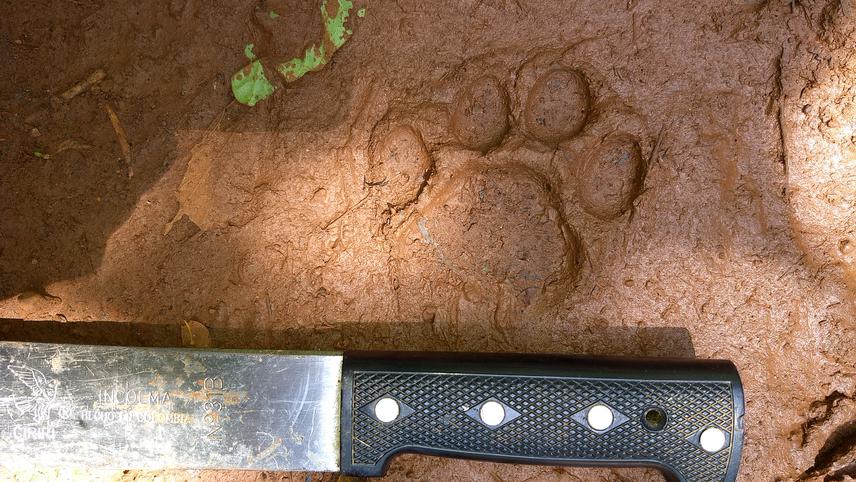Facundo Robino
Genetic studies of jaguar populations are currently of vital importance, as it is a species with a marked decrease in population size, contractions in geographic range and habitat fragmentation. Currently, the southernmost jaguar population persists in the Atlantic Forest of Argentina. This project aims to evaluate the effect of habitat loss and fragmentation on the genetic structure of this jaguar population. The estimated genetic parameters will be correlated with connectivity maps of jaguar habitat, which will allow ascertaining the effect of the landscape matrix on the quantity and distribution of genetic variability.

In the past, jaguars occurred throughout the Atlantic Forest (AF), but their current distribution has been greatly reduced, being relegated to a few fragments of original forest and showing a marked loss and fragmentation of their habitat. The Upper Parana Atlantic Forest (UPAF) of Argentina, Brazil, and Paraguay contains the southernmost jaguar population distributed in a few remnants of native forest
The overall goal of my project is to understand the effects of habitat fragmentation in the population genetics of jaguars in the UPAF and three ecoregions of the Argentinean North. I want to understand the relationship between populations of different Jaguar Conservation Units in their environment and thus, to determine appropriate management actions for conservation.
In the next year my objectives are 1) To evaluate if the UPAF jaguar population is structured, 2) To understand how the process of habitat loss and fragmentation affects the genetic structure of the UPAF jaguar populations, and 3) To compare the effectiveness and cost of molecular methods vs camera-traps for population estimation of the effective size of the southern Jaguar's population in the UPAF. We will use capture-mark-recapture (CMR) methods using the coat pattern in photographs and genetic CMR based on multilocus genotypes from indirect samples.
We will obtain the genetic samples from the feces of jaguars. We will sample with trap cameras and search for faeces in the Brazilian Argentine Green Corridor. In addition, with the jaguar project team we will maintain a participatory monitoring network with volunteers from the local community. These volunteers will be trained to collect traces of large cats.
The collected feces will be transferred to the laboratory of the Group of Genetics and Ecology for Biodiversity Conservation (GECOBI), located in the Argentine Museum of Natural Sciences (Autonomous City of Buenos Aires). In this laboratory
I will extract the DNA from the samples and using mitochondrial DNA and microsatellites I will determine species, individual and sex of each one. Once these results are obtained, I will perform statistical analyses to estimate population genetic parameters. I will evaluate the viability of jaguar populations and the present level of gene flow between sub-populations.